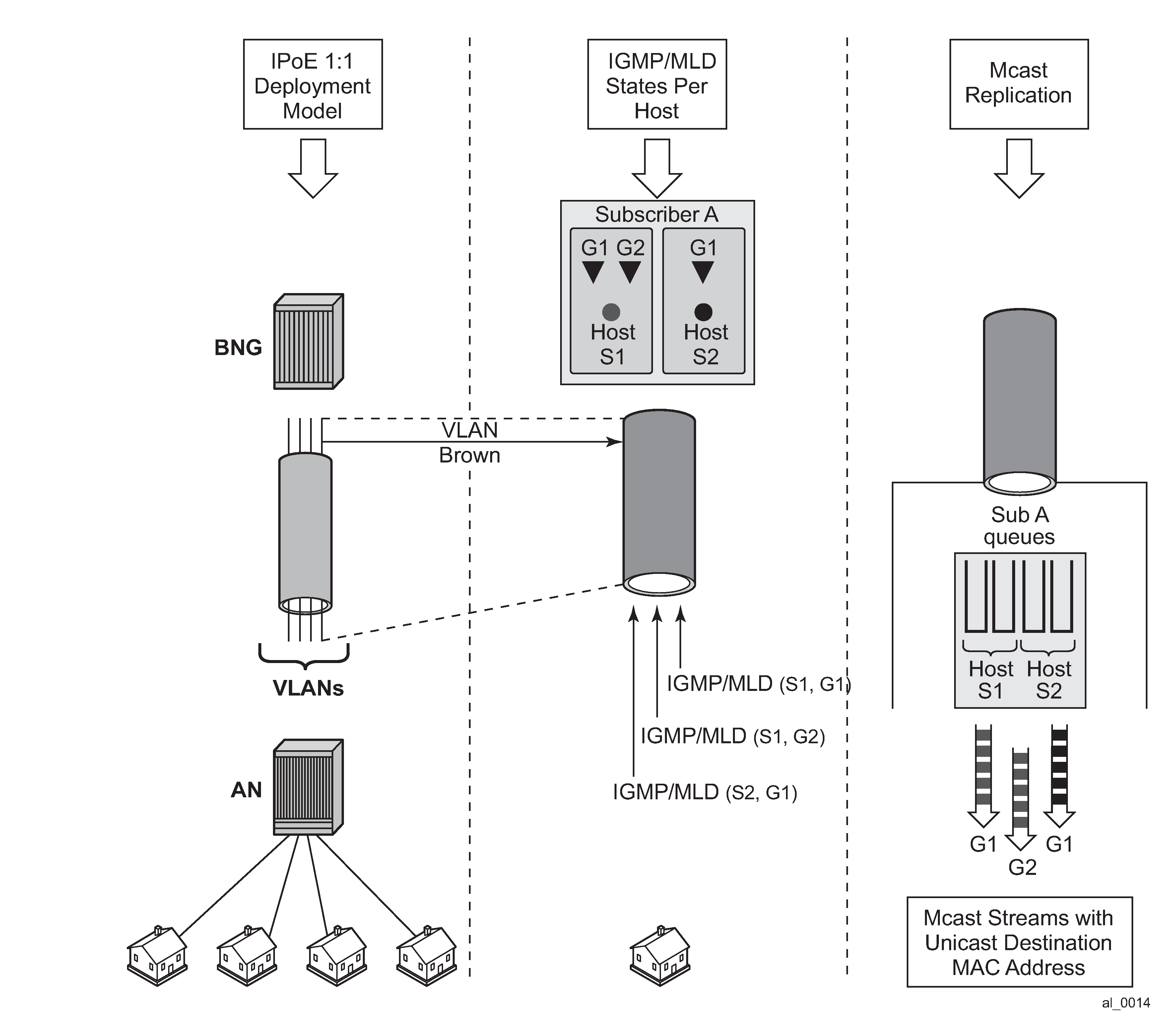The AN is not IGMP/MLD aware, all replications are performed in the BNG. From the BNG perspective this deployment model has the following characteristics:
IGMP/MLD states are kept per hosts and SAPs. Each host can be registered to more than one group.
MLD uses link-local as source address, which makes it difficult to associate with the originating host. MLD (S,G) are always first associated with a IPv6 WAN host if available. If this WAN host terminate its IPv6 session (by lease expiry, session terminate, and so on), the (S,G) is then associated with any remaining WAN host. Only when there are no more WAN hosts available is the (S,G) associated with the PD host, if any.
IGMP/MLD Joins are accepted only from the active subscriber hosts as dictated by antispoofing.
IGMP/MLD statistics can be displayed per host or per group.
Multicast traffic for the subscriber is forwarded through the egress SAP queue. In case that the SAP queue is disabled (profiled-traffic-only command), multicast traffic flows through internal queues outside of the subscriber context.
A single copy of any multicast stream is generated per SAP. This can be viewed as replication per unique multicast group per SAP, instead of the replication per host. In other words, the number of multicast streams on this SAP is equal to the number of unique groups across all hosts on this SAP (subscriber).
Traffic statistics are kept per the SAP queue. Consequently multicast traffic stats are shown outside of the subscriber context.
HQoS adjustment may be necessary.
Traffic cannot be explicitly classified (forwarding classes and queue mappings) inside of the subscriber queues.
Redirection to the common multicast VLAN (or Layer 3 interface) is supported.
Multicast streams have multicast destination MAC.
MLD uses link-local as source address, which makes it difficult to associate with the originating host. MLD (s,g) is associated with the IPv6 host. Therefore, if any WAN host or PD host end their IPv6 session (by lease expire, and so on), the (s,g) is associated with the remaining host address/prefix. The (s,g) is be delivered to the subscriber as long as a IPv6 address or prefix remains.
This model is shown in Figure: 1:1 model.
